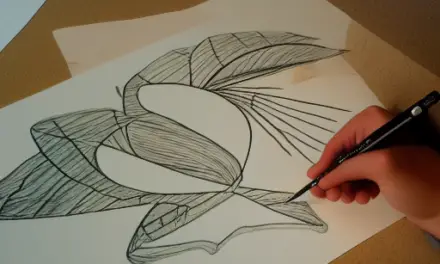Growing vegetables in the winter requires a few things to keep them healthy and growing. These include heat, light, and the right equipment. The right type of vegetables for winter are hardy, which means they can handle the cold, rain, snow, and dark conditions. In addition to being resistant to pests, they can also withstand cold temperatures.
Growing alliums
Many gardeners skip growing vegetables in the winter, but some vegetables are able to tolerate colder temperatures. These include English peas, leeks, and kale. These vegetables have lower water requirements and can even benefit from a light frost. The light frost actually improves the flavor of the vegetables by converting their starches to sugar.
Leeks are hardy and adaptable to cold temperatures, making them an excellent choice for growing in the winter. These plants are known for their long, thick stalks and mild flavor. Leeks are also easy to grow at home and don’t need a lot of space. Even if you don’t have any gardening experience, you can still grow them and reap a bountiful harvest when winter rolls around.
To protect your vegetables from freezing temperatures, plant them in the warmest part of your garden bed. If you are not able to grow them in the ground, you can bring them indoors in a pot. Make sure you water them regularly – this will protect the roots from freezing. If temperatures fall too low, however, you may need to only water the roots. Another method for protecting your plants is to cover them with thick layers of mulch.
Growing kale
There are several benefits to growing kale in winter. For starters, it is easier to transplant than other types of greens, and it doesn’t require as much space. It also can tolerate partial shade. It is also best planted in soil that drains well and contains plenty of organic matter. It is a fast-growing plant and likes high-nitrogen vegetable fertilizer. There are several varieties of kale to choose from, including ‘Hanover Salad’, ‘Lacinato,’ and ‘Red Russian’. ‘Red Russian’ has tender leaves with purple veins and is one of the sweetest varieties available.
Kale can be planted in a pot of about 12 inches in diameter with plenty of drainage holes. If possible, use an unglazed clay container to prevent root rot. It also grows well in pots with a high proportion of organic matter. Be sure to choose a quality potting mix, such as Miracle-Gro Raised Bed Soil, or Performance Organics All Purpose Container Mix.
Growing beets
During the winter, beets grow well in soil temperatures between 50 and 75 degrees Fahrenheit. Seedlings emerge in about five to eight days after planting and are ready for harvesting when they are about one-half to two inches in diameter. To speed up germination, soak the seeds overnight. Seedlings need plenty of moisture in soil to germinate, and weeds should be pulled daily or every other day.
Beets grow best in soil that is a slightly acidic, loamy texture. Avoid clods and stones as these may impede root growth. Adding compost or aged seaweed can help with the soil’s pH level. Keep the pH of your soil between six and eight. A soil pH of 6.5 is ideal. Avoid fertilizing your beets with fresh manures, which are high in nitrogen and can cause the roots to twist.
Beets are fast growers and should be harvested around seven to eight weeks after planting. You can test the maturity of your beets by pulling back the mulch and inspecting the shoulders. If the roots are between one and three inches in diameter, they’re ready to harvest. Harvesting your beets too early will cause them to get woody and less edible.
Growing radicchio
Growing radicchio in the winter is possible if you start it before the first frost. Plant it in an area with good drainage and one to two inches of organic matter. Water it once or twice a week with a good organic mix. After the first few weeks, fertilize the radicchio with a nitrogen-based plant food. This will encourage it to grow, but too much nitrogen can cause it to bolt or develop a bitter taste.
Radicchio is best harvested when it has formed a firm red or purple head. Once the heads are formed, cut them from the plant at ground level. Store them in the refrigerator for up to a week. The leaves are edible when cooked or sliced. You can also sauté them in olive oil with salt and enjoy them as a side dish or snack.
Radicchio grows well in soil that has a rich, loamy texture and good drainage. The soil should be moist but not soggy or soaked, so the radicchio roots do not get drowned by water. During the growing season, radicchio needs about an inch of water. It will tolerate most soil types, but you may have to amend your soil if it is too dry or has too many weeds. You should also cover the soil with a two-inch layer of organic mulch to retain moisture and suppress weeds.
Growing chard
Swiss chard is a cool-weather perennial that can be grown from seeds or transplanted in the fall. It’s highly nutritious and comes in a variety of beautiful colors. It adds a splash of color to winter gardens and pairs well with other ornamental plants. It prefers full sun but can also grow in some shade, and requires moderate watering.
Start the seeds in a shallow container filled with water and place them about an inch apart. The seeds should be soaked for 24 hours, and then sown one-half to one-inch deep. Space the plants two to six inches apart, and thin the plants to about eight inches apart. You can also harvest chard cuttings, which can be eaten raw or added to stir-fry recipes. Chard plants are typically self-fertile, but you can add a small amount of fertilizer half-way through the season.
You can plant the seeds of chard in late fall or early spring in full sun. However, chard also grows in partial shade. It grows well in soil with good drainage and a high organic content. In addition to fertilizing the soil, you can also mix aged manure into the soil before sowing the seeds. Chard seedlings can be planted two to three weeks before the last spring frost date.
Growing arugula
If you’d like to grow arugula in your winter garden, you can do so from seed. To grow arugula from seed, you need to prepare the soil. It should be well-drained and rich in nutrients. It should also be kept moist and weeded regularly. Arugula is a fairly low-maintenance crop. Its best leaves are young, but mature leaves can be bitter.
Sowing seeds of arugula is an easy process and you can usually harvest it within six to eight weeks. Seedlings will germinate easily if they are planted in cool soil. You can also cover them with a cloche to protect them from light frost. The soil should have a pH of six or less.
Arugula is a cool-season plant that can grow in nearly any location. It is best planted when the temperature of the soil reaches six to 10 degrees Celsius. Once the soil reaches these temperatures, you can plant the seeds in the fall.
Growing arugula in containers
When growing arugula in containers, it is important to maintain the moisture level in the soil, which is important for this leafy green. A dry soil can result in wilting of the leaves, which can shorten the harvest period and cause premature bolting. This can be easily avoided by watering your arugula regularly. You can either buy or make self-watering containers, which are designed to keep the soil moist.
You can start growing arugula in containers in the autumn and harvest the leaves around 40 days after planting. Arugula needs cool temperatures to thrive. It needs 40 days to reach its full height and is most commonly grown in small containers. Long, narrow containers that can sit on a window sill are ideal for arugula.
If your container isn’t large enough to house your arugula, consider growing it in the winter in a north-facing window. The cooler temperatures will help to prevent bolting. However, if you live in a warmer climate, you can move your container to a south-facing window. Make sure to keep your container away from heat sources during the winter months, as they tend to dry out the soil and slow growth. During the winter, you can prune the leaves of your arugula plants to prevent leaf wilting. However, be aware that the regenerated leaves will have a woody flavor.
Growing arugula in a polytunnel
Arguably the easiest salad green to grow, arugula does not require a cold frame, and can be grown in any soil, including garden soil. It grows quickly and can be planted in short rows or blocks. Plant arugula around 4 inches apart to allow for thinning once it has established itself.
Winter can be hard on salad leaves, but a polytunnel will protect your plants from wind, frost, and cold. It is possible to grow lettuce, herbs, and other winter vegetables throughout the year, including arugula. Potatoes, for example, can be sown in October and harvested in January. You can plant your potatoes as late as October, as long as they are spaced 20cm apart.
A polytunnel is also a great place to grow peas, so consider growing them during the winter. Peas are hardy, and can produce pods and flowers even during the coldest months. When growing peas, water them early in the day so they don’t dry out during the day. On overcast days, water the plants lightly, as water-logged leaves can be damaged by frost.






